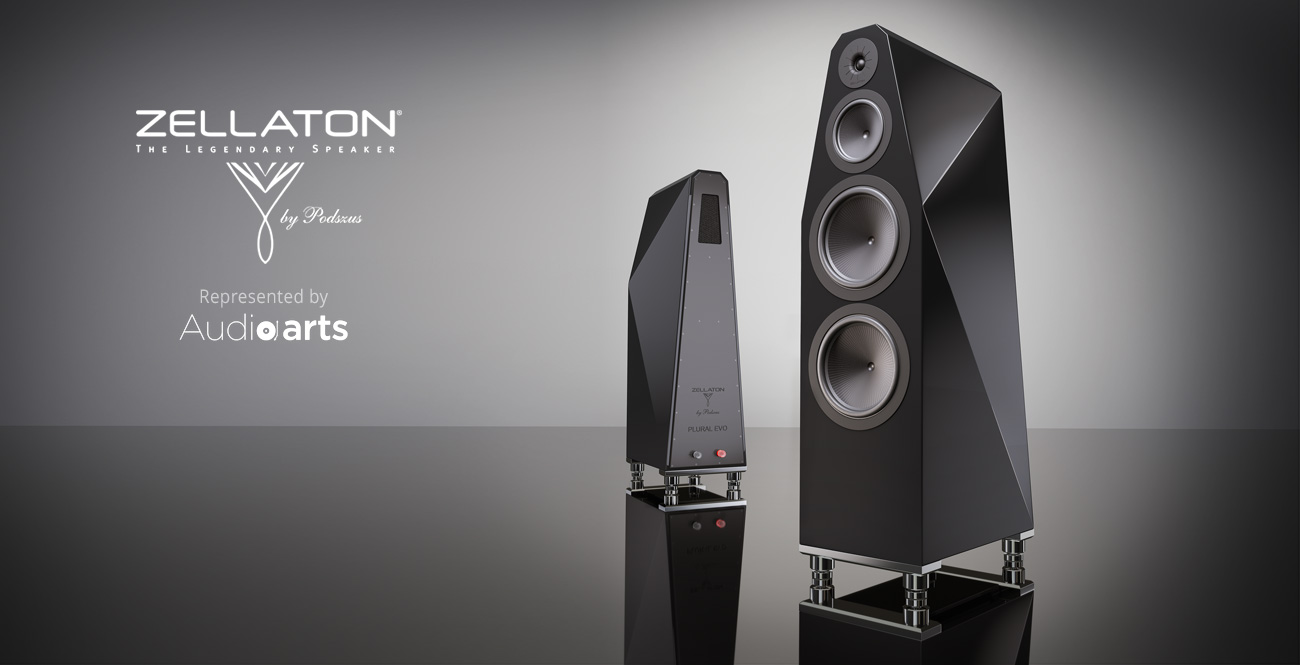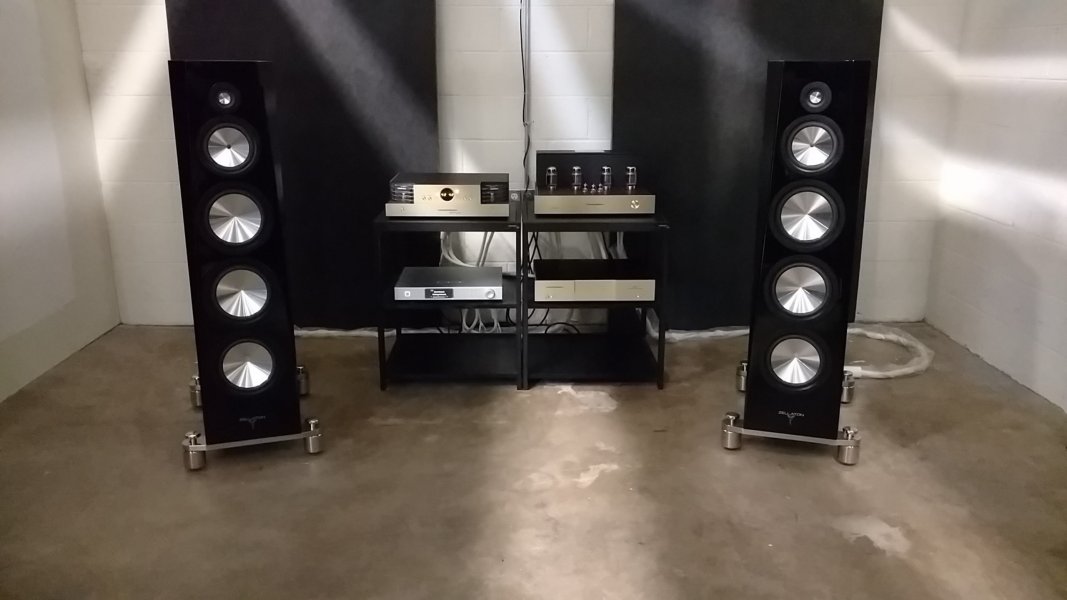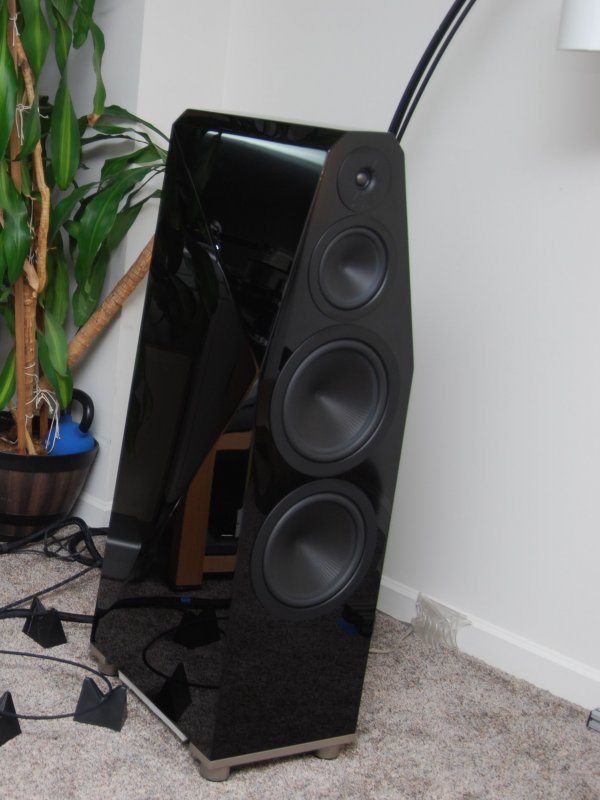Background
As a lifelong audiophile and part-time audio reviewer, I have been fortunate to own, review, and audition, many of the top high-end systems. To further my passion, I was fortunate to be able to build a dedicated listening room. With an Acoustic Sciences custom designed listening space, my only consideration was the sound, not visual aesthetics. The room was built using the ASC IsoWall System with Tube Traps to provide maximum flexibility and easy tuning for any future speaker. For addition room details: https://6moons.com/audioreviews/theroom/1.html
View attachment 120321
View attachment 120322
View attachment 120323
My speaker journey began with electrostatics, touching on many brands and technologies, then progressing deeply into the Wilson ecosystem, ending with the Alexandria X-2 Series 2. While not perfect by any means, when meticulously set up in a well-designed room, they provided me exceptional enjoyment. I believed that my lifelong speaker journey had ended. Boy, was I wrong.
Visiting the Munich audio show can be overwhelming in its size and scope. Fortunately, many of the ultra-high and systems are exhibited in adjacent large 20’ x 40’ atrium rooms. Although their construction and glass make them less than ideal, they are significantly larger than the typical hotel room, with space to add room treatments. The beauty of this layout allows the ability to compare some of the world’s finest systems side-by-side.
Generally, most systems were good, with some excellent. Then I came to the Zellaton room showcasing their Reference Speaker. I was immediately blown away. The room disappeared, the speakers disappeared, and Dean Martin materialized in a focused 3D space. Coherent, tonally correct, with jaw dropping realism. With the Zellaton sound as a new baseline, I went back to all the major rooms. In my opinion, none approached Zellaton. Six times over two days I visited the Zellaton room for extended listening. For my ears and my tastes, Zellaton was head-and-shoulders above the rest. This was the first speaker that was unequivocally and materially better than my Wilson Alexandria’s in every respect.
It is here at Munich that I met Gideon Schwartz, owner of Audio Arts, and the North American importer for Zellaton. We began ongoing discussions, and it became clear that Gideon is, first and foremost, passionate about the music – not just the technical specs. Over the years I have developed very specific listening objectives and have used these as a filter for my system development. I credit Gideon 's knowledge and experience in understanding my priorities and tailoring the installation and ancillary equipment to meet my goals.
Flash forward three years, through Covid and global supply chain issues, my new Zellaton Statements arrived. At 700 pounds each, it took a crew of eight and a skid loader to get them to the basement. Let me assure you, the wait was worth it.
View attachment 120324
View attachment 120325
The Statements
Visually stunning, like a beautiful and exquisite work of art. The mirror finish is the deepest, richest piano finish imaginable. The outrigger feet are finished to Rolls Royce standards. Their attention to detail is obsessive.
View attachment 120326
At 6 foot tall and 700 lbs. each, the Statements with their unique angles, are far less imposing than one might imagine. They utilize a complex cabinet, open in the rear, designed with multiple layers, and massively braced to minimize vibrations, verified by a Laser Doppler vibrometer.
View attachment 120327
Clearly, a major key to the Zellaton sound is their unique proprietary speakers. With almost 100 years of R&D, the drivers in the Statements and the other models in their Klassik line are handmade with multilayer foam and an aluminum coating thinner than a human hair. Baked for weeks, their inherent design eliminates phase shift and produces an ideal impulse response. With the foam composed most of air, the result is an extraordinarily lightweight and rigid driver with the tweeter diaphragm weighing only .18 grams. Each driver is manufactured using the same aluminum coated foam process, and together they integrate with a seamless “electrostatic-like” coherence. The effect is startling.
View attachment 120328
The Sound
The first impression is their remarkable “in the room” realism. Zellatons have an uncanny, and in my opinion, unmatched ability to present the convincing illusion of real performers in the room. You get the unmistakable feeling that there is less between you and the music. The resolution is detailed yet natural. With the right recording the performer appears and exists naturally in a realistic 3D space.
The music is not just presented, it flows naturally capturing its “soul.” Turn the lights down, close your eyes, and the performance just appears in the room. With the right music, the speakers disappear, the walls recede, and you are left with the musical event. The music is alive and exciting.
The design and uniformity of the individual drivers produces a purity that I have not heard since the early Quad ESL. For those of you who remember the Quad, imagine them scaling to a full range system, with unlimited dynamics, a fully integrated low-end capable of pressurizing a large listening room, while maintaining their remarkable transparency and liquidity.
Interestingly, the midrange driver is almost full range with a response from 100hz to 8k, covering the majority of the listening range. With no crossovers or phase issues, this undoubtedly contributes to seamless presentation and exquisite midrange realism.
Leading edges are fast, crisp, and clean, without the slightest edginess. The highs are extended and free of grain, with the tweeter extending to 40khz. Having lived with the somewhat “rougher” tweeter of the Alexandria's, the Zellatons took a little bit of an adjustment. With time it became clear to me that their purity and the lack of distortion actually delivers more high-end detail. What’s missing is any distortion or artificial brightness. For example, whether it is Blood, Sweat and Tears or Miles Davis, trumpets are extended, exciting, and quite real, leaving just the right, balance, and bite. Missing is any added edginess, detail, or artificial enhancement.
As with the highs, the bass is fully integrated and blends seamlessly. The low-end is fast, tight, and controlled, never calling attention to itself outside of the music. But with the right music it will knock your socks off. The opening notes of Donald Fagan’s Morph the Cat is absolutely stunning with its low-end and definition. Compared to the Wilsons, my first reaction was a slightly subdued bass. With further critical listening, it appears that the Wilson’s were activating a specific room mode. Zellaton’s bass while equally deep, is faster, far more integrated, and flows more naturally with the music.
Compared to the Zellatons, the Wilsons did not fully bloom at low levels or with intimate music. With seemingly limitless dynamic range the Zellatons scale effortlessly, with finesse and clarity at all volume levels. It doesn’t matter whether it’s a Yo-Yo Ma cello suite or Led Zeppelin, each appear in the appropriate acoustic envelope. While some speakers expand the image size as the volume increases, resulting in twenty-foot-tall singers in your listening room – not so with the Zellatons. They seemingly always maintain correct proportions.
Room placement is flexible in that they can project a more laid-back far-field presentation, or to my tastes, a more immersive perspective with a deeper 3D holographic soundstage. Room positioning has a significant effect on the size and depth of their presentation.
Well, this ends my small introduction into the Zellaton world. However, at this exalted level, describing the sonics, and checking “audiophile boxes” does not begin to tell the full story.
High-end listening is very personal and individual. Different people have different tastes and goals. However, I can clearly state my priorities:
• Emotionally involvement- being pulled into the musical event.
• Holographic 3D immersion - “you are there” presentation.
• The speakers and room disappear.
• Musical purity as opposed to detail for detail’s sake.
With these as a filter, I can unequivocally say that the Zellatons hit it out of the park. For me, I have finally arrived at the end of my lifelong speaker journey.
View attachment 120329
View attachment 120331




